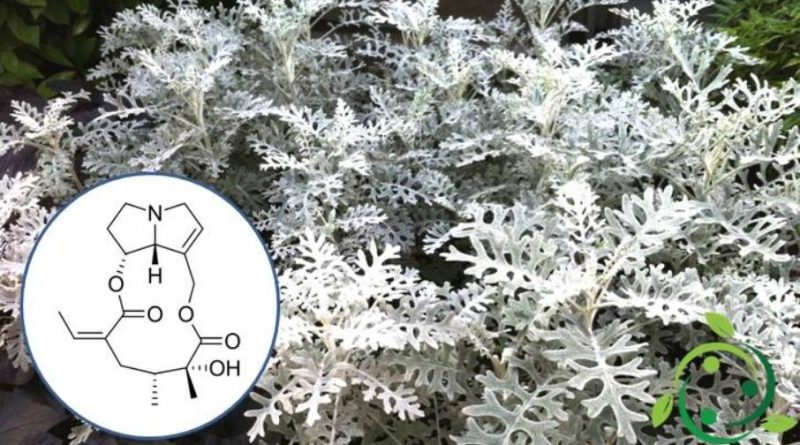Senecionine
Senecionine
Senecionine, also known as Aureina or Senecina, is an alkaloid of the group of pyrrolizidine alkaloids with brute or molecular formula: C18H25NO5.
Senecionine is the diester obtained from the union of retronecin with senecic acid. Synecic acid is in turn derived from the amino acid isoleucine.
The Senecionine is present in the Cineraria or Senecione coastal ash (Jacobaea maritima (L.) Pelser & Meijden, 2005) whose synonym is (Senecio maritimus (L.) Rchb.)) And in many plants belonging to the genus Senecio.
These include: Petasites hybridus L., S. erraticus B., S. erucifolius L., S. inaequidens DC, S. nemorensis L., S. petasitis DC, S. squalidus L., S. subalpinus C. , S. viscosus L., S. vulgaris L., Tussilago farfara.
In Asteraceae (Senecio spp. And Eupatorium spp.) Senecionine and senecionine alcaloidi alike are mainly synthesized in the roots and distributed along the fibers throughout the plant.
In the genus Senecio these substances can reach 18% of the dry weight of the plant and are accumulated for the most part in the inflorescences and preserved there.
According to some sources, senecionine gives Cineraria emmenagogue and sedative uterine properties.
However, remember that at high doses, senecionine is highly toxic to the liver and has been shown in the laboratory to be carcinogenic to certain species of mammals.
Warning: The information given is not medical advice and may not be accurate. The contents are for illustrative purposes only and do not replace medical advice.

